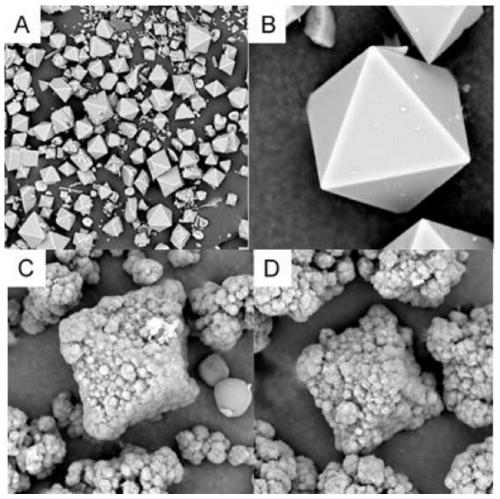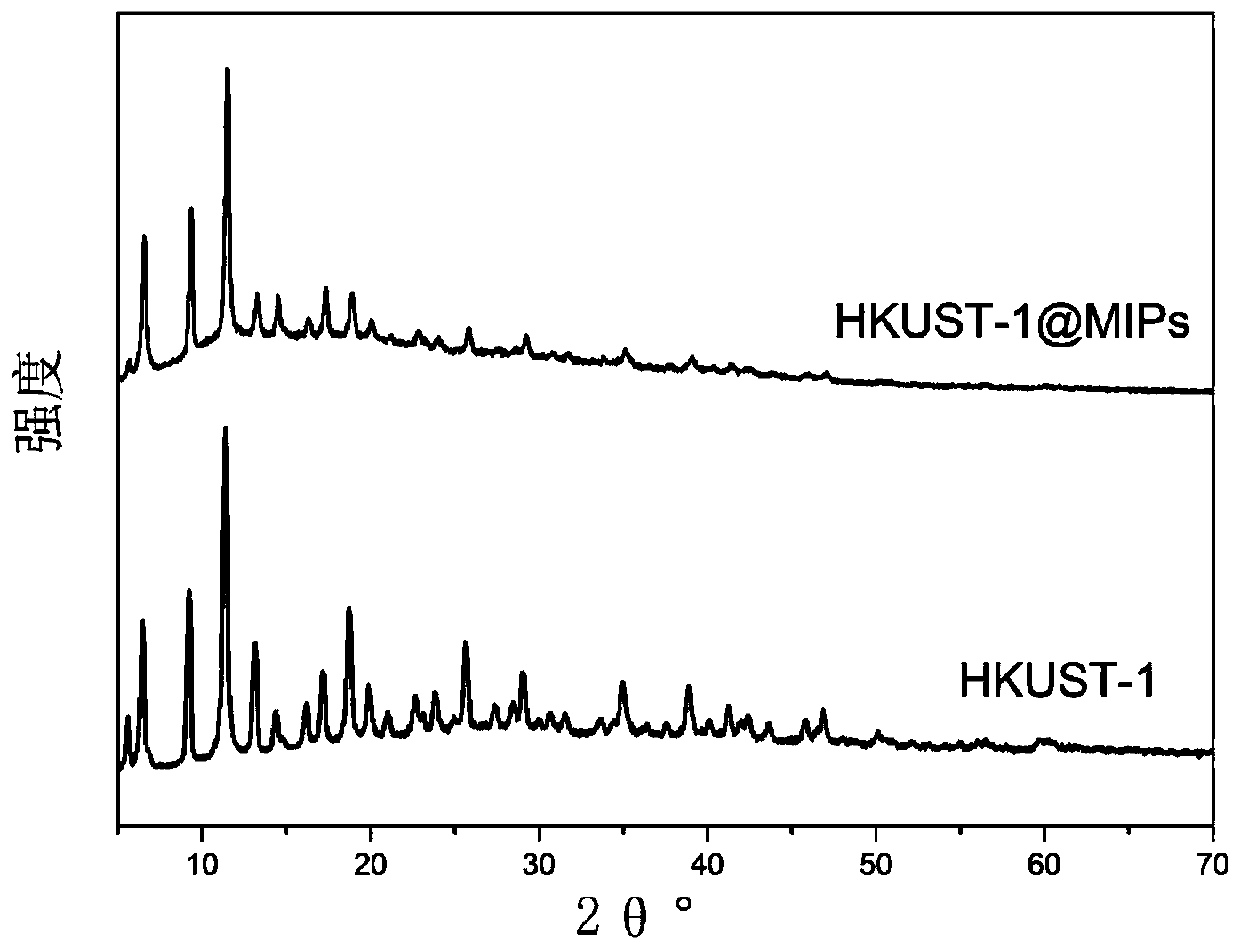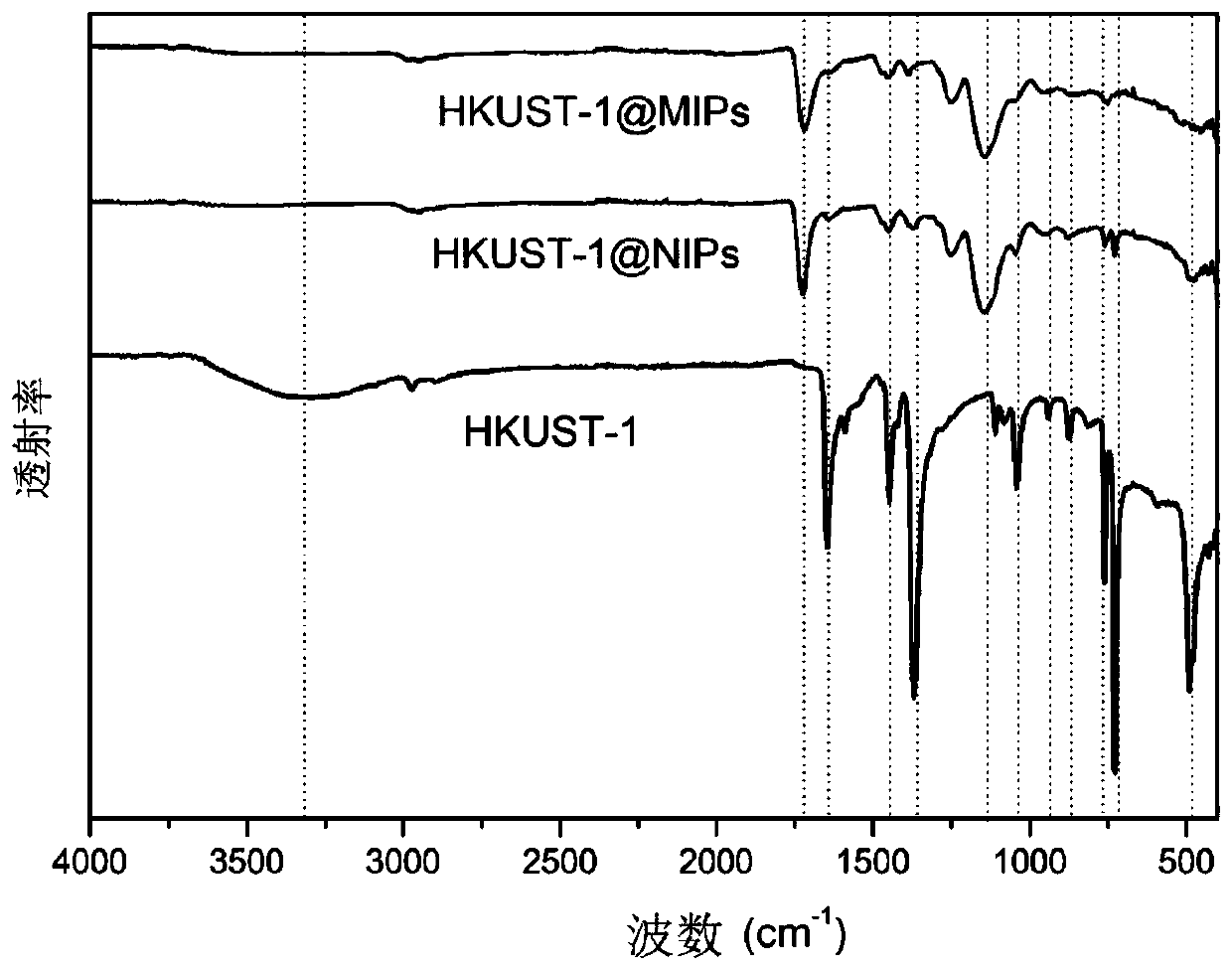Aflatoxin surface imprinted polymer based on HKUST-1 and application of polymer
A technology of HKUST-1 and aflatoxin, which is applied to the detection of aflatoxin surface imprinted polymers and crops, can solve the problems of difficult template molecule elution, irregular polymer shape, and low mass transfer rate. Achieve the effect of eliminating template leakage, fast mass transfer rate and high specific surface area
- Summary
- Abstract
- Description
- Claims
- Application Information
AI Technical Summary
Problems solved by technology
Method used
Image
Examples
Embodiment 1
[0037] (1) Synthesis of HKUST-1
[0038] Take 3.15g (15mmol) of bis(trichloromethyl)carbonate (BTC), add 75mL of ethanol, and sonicate until the BTC is completely dissolved. Accurately weigh 6.05g (25mmol) Cu(NO 3 ) 2 ·3H 2 O In another beaker, add 75mL H 2 O, ultrasonic, to Cu(NO 3 ) 2 ·3H 2 O is completely dissolved. Mix the solutions in the two beakers, stir them magnetically for 20min, pour them into a hydrothermal reactor, react at 120°C for 12h, filter, wash with ethanol three times to remove unreacted BTC, then wash with water three times to remove unreacted Cu(NO 3 ) 2 ·3H 2 O, filtered, and dried at 150°C to obtain a purple solid, namely dehydrated HKUST-1.
[0039] (2) Synthesis of HKUST-1@MIPs
[0040] Accurately weigh 0.0654g (0.3mmol) 7-acetoxy-4-methylcoumarin, add 0.1518mL (1.8mmol) α-MAA, 2.2656mL (12mmol) EGDMA, then add 0.04g AIBN, after ultrasonication for 10min Move to a three-neck flask, add ethanol, stir magnetically at 80° C. for 5 h, and dry...
PUM
 Login to View More
Login to View More Abstract
Description
Claims
Application Information
 Login to View More
Login to View More - R&D
- Intellectual Property
- Life Sciences
- Materials
- Tech Scout
- Unparalleled Data Quality
- Higher Quality Content
- 60% Fewer Hallucinations
Browse by: Latest US Patents, China's latest patents, Technical Efficacy Thesaurus, Application Domain, Technology Topic, Popular Technical Reports.
© 2025 PatSnap. All rights reserved.Legal|Privacy policy|Modern Slavery Act Transparency Statement|Sitemap|About US| Contact US: help@patsnap.com



